Apple A7 64-bit chipset: Explained

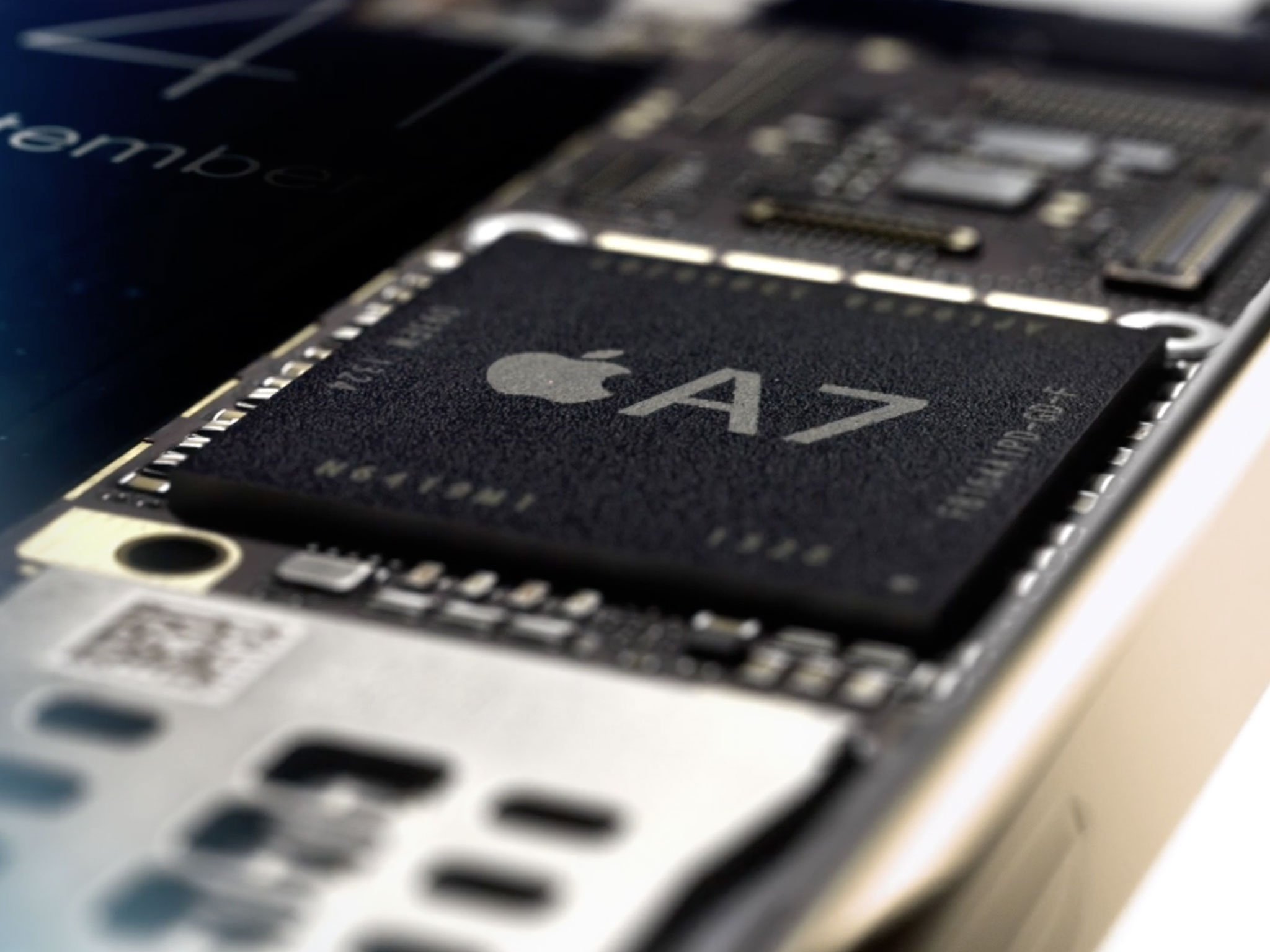
Everything you need to know about the new Apple A7 system-on-a-chip with 64-bit ARMv8 architecture for twice the speed, twice the graphics, twice the registers, and OpenGL ES 3.0 for even greater gaming!
At the heart of every iPhone 5s beats an Apple A7 system-on-a-chip (SOC). That's the term for a central processing unit (CPU), graphics processing unit (GPU), and other components like random-access memory (RAM) spun together into a single, integrated chip. The big news is that the Apple A7 is twice as fast at both general purpose and graphics processing as its predecessor, the Apple A6, yet remains roughly the same size. The bigger news is that the Apple A7 is 64-bit, and the first 64-bit processor crafted for a consumer smartphone, and that it supports OpenGL ES 3.0, and comes with a companion chip, the M7 motion coprocessor.
Note: There's not a lot of real information available on the Apple A7 yet. Apple hasn't released much and they probably never will. It's not their way. We'll get a better idea about what the chipset is and what it means after the iPhone 5s is put through its paces, gets torn down, and gone at with an electron microscope. That aside, here's what Apple has had to say about the Apple A7 SoC so far:
There's fast. And then there's A7 fast. The new A7 chip gives you CPU and graphics performance up to 2x faster than the A6 chip. Even more impressive, A7 makes iPhone 5s the first 64-bit smartphone in the world — that's desktop-class architecture in a superslim phone. And because iOS 7 was built specifically for 64-bit, it's uniquely designed to take advantage of the A7 chip.A7 supports OpenGL ES version 3.0 to deliver the kind of detailed graphics and complex visual effects once possible only on Mac computers, PCs, and gaming consoles. The difference is amazing. Take the imaginary worlds in games, for instance. Textures and shadows look more true to life. Sunlight reflects off the water. The whole experience feels much more realistic.iOS 7 and all the built-in apps are optimized for the A7 chip. The Camera app is a great example. It takes advantage of a new image signal processor built into A7 to give you up to 2x faster autofocus, faster photo capture, and higher video frame rates.1 You'd think with all this going on, battery life would suffer. But it doesn't, because A7 is designed to be incredibly energy efficient.
Apple started designing their own chipsets with the Apple A4 for the original iPad in 2010. They brought that SoC to the the iPhone 4 later the same year. It sported an ARM Cortex-A8 CPU, a PowerVR SGX 535 GPU, and 512MB of RAM fabricated at 45nm, along with some performance enhancements supplied by Instrisity, a company Apple later bought.
With the iPad 2 in 2011, Apple introduced the dual-core Apple A5 SoC. It upped the ante to a ARM Cortex-A9, a PowerVR SGX543MP2 GPU, and 512MB of RAM, and the iPhone 4S got it later that year as well. Dual-core, while adding a small amount of overhead, allowed certain features to be run in parallel. For example, one core could keep running the iPad while the other worked at beaming a video to an Apple TV over AirPlay.
The Apple A5 was originally fabricated at 45nm but Apple reduced it to 32nm in 2012 for the updated iPad 2, Apple TV 3, and iPod touch 5. Reducing the die size not only made the chip smaller, but more power efficient as well. Apple also added a quad-core PowerVR SGX543MP4 for the Apple A5X included inside the Retina iPad 3. Four times the graphics cores were needed to drive the massive 2048x1536 display on the iPad 3, and even then, to only barely above acceptable levels.
For the Apple A6 SoC in the 2012 iPhone 5, instead of sticking with the Cortex A9 or moving on the new ARM A15, Apple did something more aggressive, and a lot more impressive. They licensed the ARM v7s instruction set and rolled something uniquely their own. It was a 32nm CMOS dual-core Apple processor - called Swift - that could run from between 800MHz and 1.2GHz.
It was no doubt difficult and expensive to move to their own design, but it let Apple produce exactly the processor they wanted and needed to produce. Many of the advantages wouldn't - and still won't - play out immediately, but it took Apple's vertical software-and-hardware-integration model to an entirely new level.
Master your iPhone in minutes
iMore offers spot-on advice and guidance from our team of experts, with decades of Apple device experience to lean on. Learn more with iMore!
Likewise, instead of going with the dual-core PowerVR SGX543MP2 graphics chip found in the iPhone 4S, or the giant quad-core PowerVR SGX543MP4 found in the iPad 3, Apple went with the triple-core PowerVR SGX543MP3 GPU. Again, 2 cores wouldn't have given the graphics performance they needed, four cores wouldn't have been as power efficient, and by designing it themselves they could use the part that was just right, topping it all off with 1GB of RAM. (The iPad 4 later got the Apple A6X with a quad-core PowerVR SGX543MP4 GPU, once again to drive the more pixel-heavy display).
Apple hasn't said exactly what it's packed into the new Apple A7 and likely never will. It's fairly certain at this point that Apple has licensed and is using the newer ARMv8 architecture for the CPU, and PowerVR Series 6 (Rogue) for the GPU. RAM remains uncertain. Apple is typically very conservative when it comes to memory, so the same 1GB as the A6 wouldn't be a huge surprise.
64-bit on the box
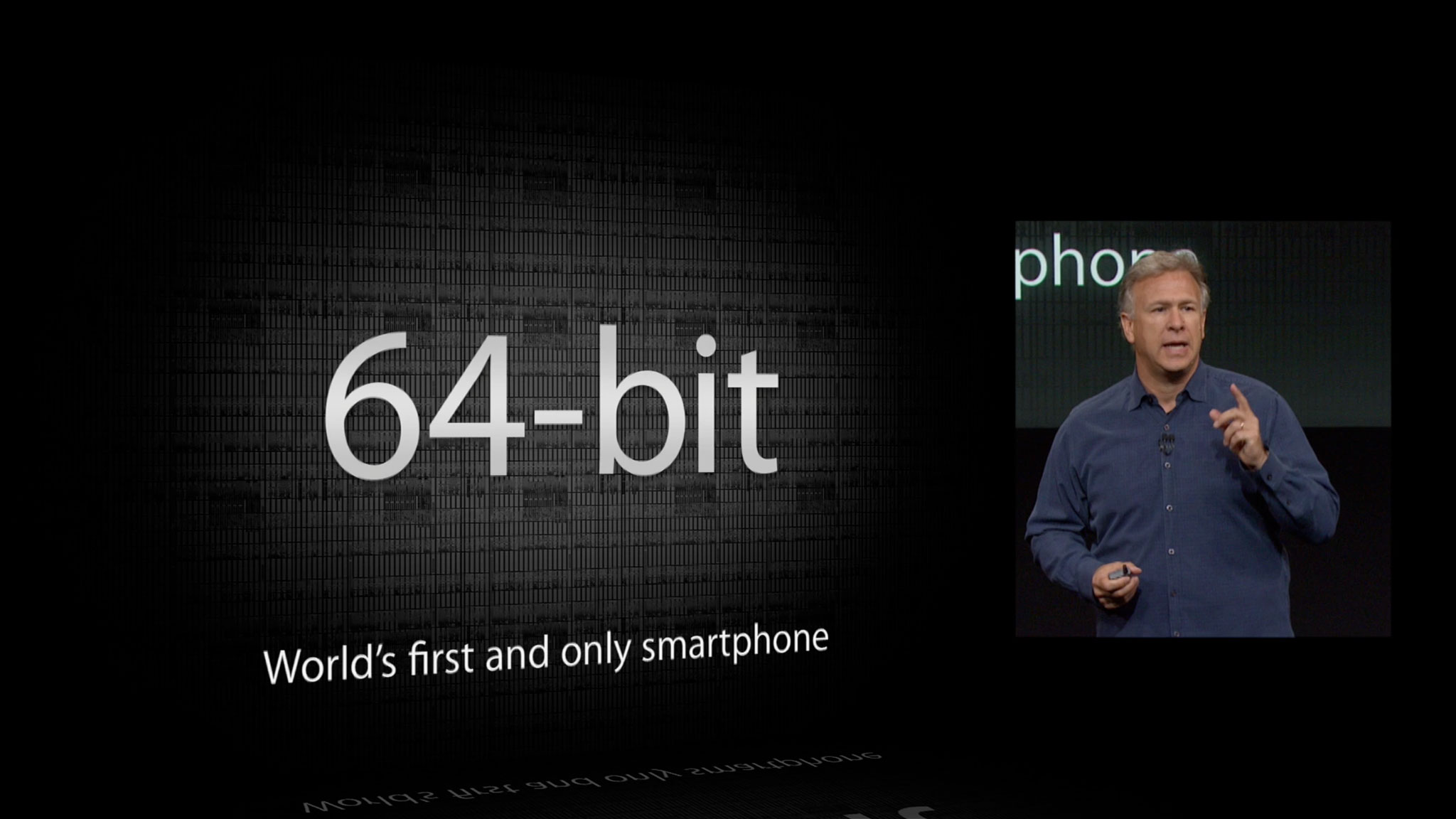
Apple claims the A7 is the world's first 64-bit smartphone processor. Like capacitive touch screens in a world that's resistive, and Retina displays when all eyes are on standard, 64-bit, while largely impenetrable to the mainstream is none the less recognizable and marketable. It sounds advanced. It sounds better than. It sounds leading edge. In a time when superficial public opinion is leaning away from Apple-as-innovator, the importance innovative, if superficial messaging cannot be stressed enough.
It's a competitive advantage as well. The interface dynamics in iOS 7 are already going to be hugely problematic for competitors to emulate. Re-building everything on top of a physics and particle engine is one thing, running constant blur shaders is quite another. It's not only computationally expensive, it's architecturally painful if you don't own the whole stack and product line from atom to bit.
The Apple A7 only compounds that problem. Even if a competitor can produce a 64-bit chipset of their own, how long will it take the operating system and apps to be update to support it? How architecturally painful will that be?
A7 and iOS 7 both take advantage of the unique strengths of Apple's product model. As difficult as it is for Apple to compete on hardware price, it will be incredible difficult for anyone to compete with what Apple is doing with their interface and integrated chipsets. Apple's profits have not historically depended on low-end market share, nor have competitors' popularity depended on best-in-class experience or architectural prescience, yet both are things everyone is going to have to pay attention to over the course of the next year or two.
Architectural advances
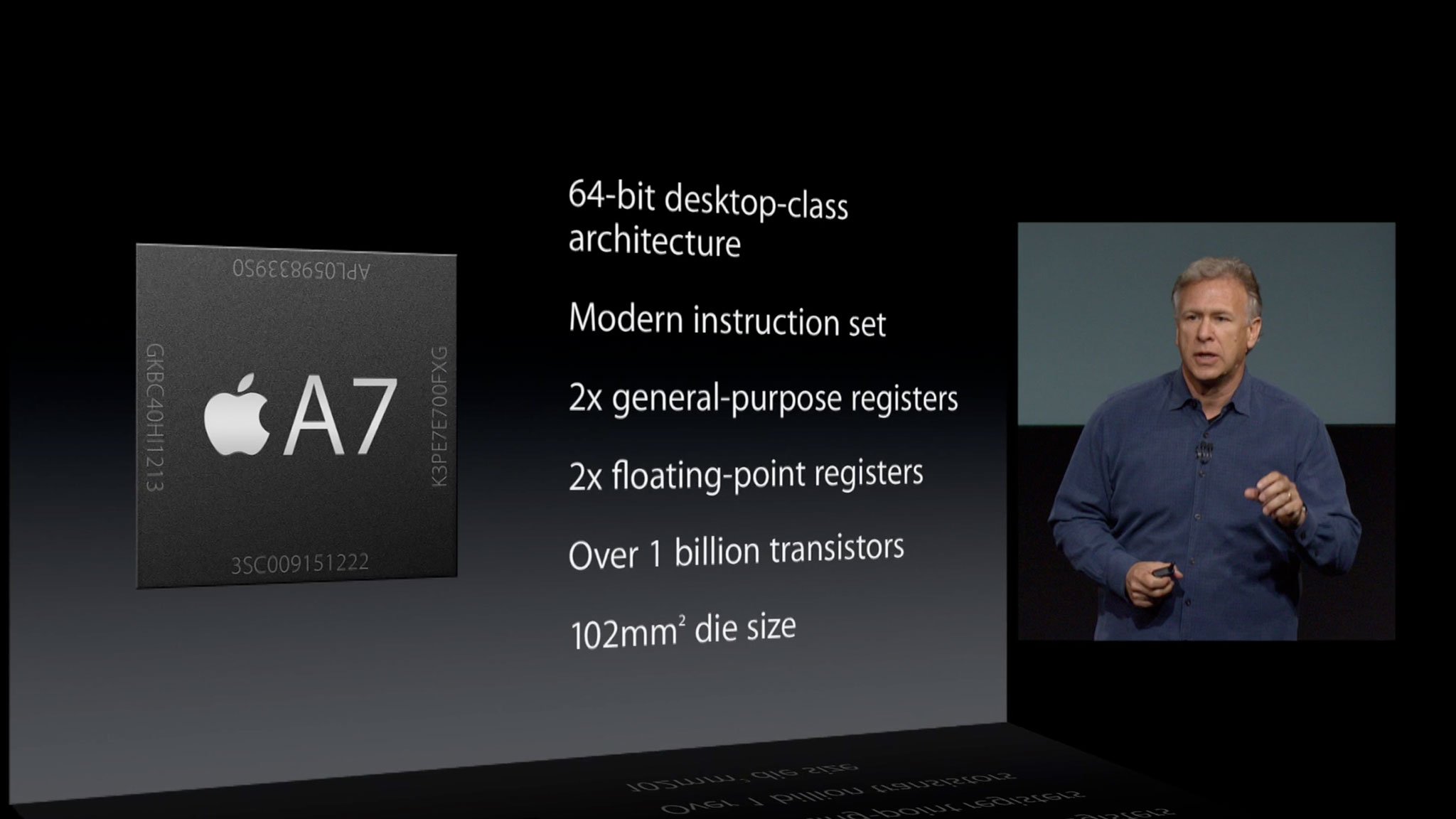
The 64-bit thing is causing some confusion. Mainly in the media. That makes a certain amount of sense. Mass media has mostly been told - and passed along - the most obvious consumer-facing benefits like the ability to address more than 4GB of RAM, and to work on much larger image and video files. It's easy to imagine a future where more powerful iPads and Apple TVs - both of which share the same processor architecture and operating system - can benefit from those capabilities, not to mention the Mac on ARM project at Apple that we might see the fruits of one day. But here, today, now, 64-bit in the iPhone 5s?
It still comes down to speed, though of a different kind.
Apple says the A7 has "desktop-class" architecture. That translates into a modern, more efficient ARM-based instruction set, 2 times the general-purpose registers, 2 times the floating-point registers, over 1 billion transistors, and all on a die that retains the same 102mm size as the previous Apple A6 processor. Which flew.
The ability to chew through registers in particular is being pointed out as a net positive. Registers are the memory units inside CPUs. They're what hold the bits being operated on at the moment. The more bits that can be held at once, the more operations that can be performed at once. And just like keeping bits in RAM is faster than moving them back and forth from physical storage, keeping them in registers is faster than going out to RAM or storage to get them.
Transparent transitions
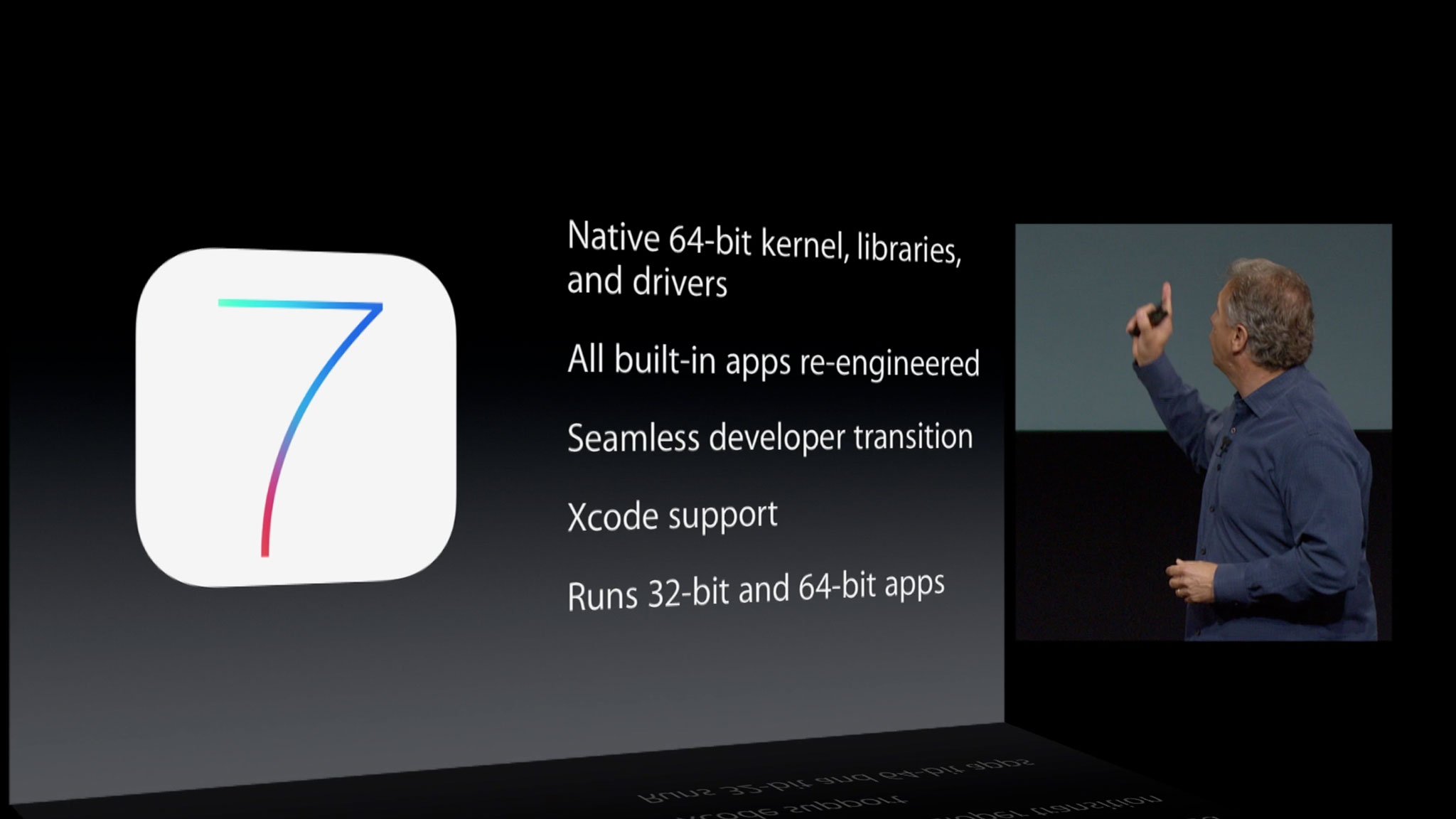
Apple also claimed that, while the 32- to 64-bit transition took years on the PC, they're going to do it in a day. That's thanks to the Apple A7, iOS 7, and new versions of apps. Support has been built into iOS 7 for the 64-bit Apple A7. That includes native, 64-bit kernel, libraries, and drivers, built-in apps that have been re-built for 64-bit, an easy transition path for developers thanks to Xcode support, and the ability to build both 32- and 64-bit apps. The iPhone 5s will likewise run apps updated to 64-bit alongside apps still stuck at 32-bit, making it transparent to customers as well.
Here's what the Apple Developer Center{.nofollow} says about the 64-bit transition:
iPhone 5s is powered by Apple's next generation A7 chip, making it the world's first smartphone with 64-bit desktop-class architecture for blazing fast performance in the palm of your hand. The iOS kernel, libraries, and drivers now take advantage of 64-bit, delivering up to 2x faster CPU and graphics performance for your apps and games. And it's easy to build and run your apps in 64-bit because Xcode automatically builds your apps into binaries that will run on both 32-bit and 64-bit devices.
There might be some increased memory demands, if both 32-bit and 64-bit frameworks are both being loaded, but hopefully the iPhone 5s hardware bump is, in part, designed to make that almost invisible as well.
Less in the abstract is the speed of transition. I worked in Enterprise during the Windows 64-bit change-over and it was ugly and annoying. I don't think most consumers even noticed the OS X 64-bit transition. Apple's proven they know how to handle these things so that they're almost transparent to the customer, and that's given them a huge edge for iOS.
Power pays
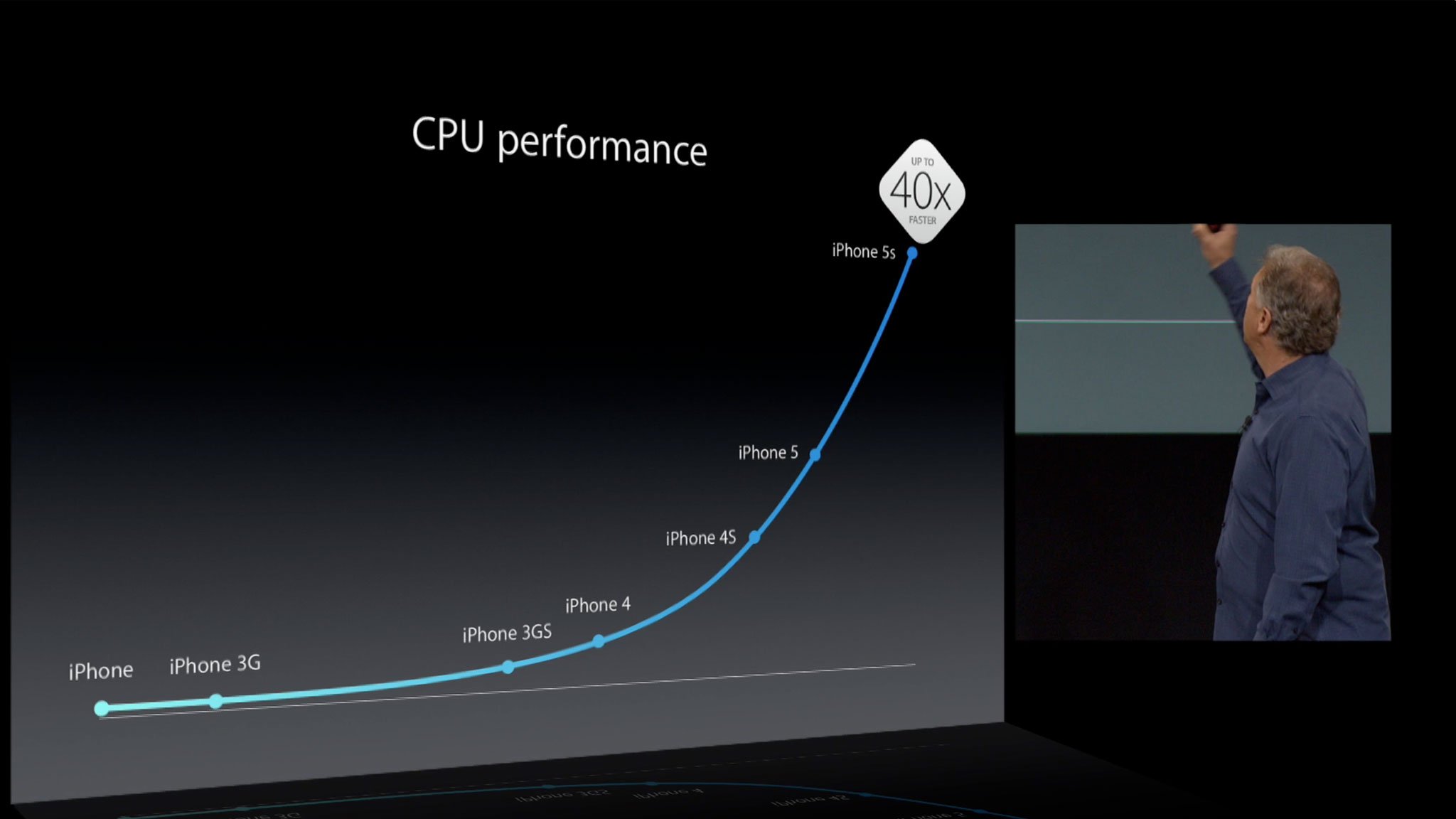
When it comes to raw speed, Apple claims the A7 CPU is twice as fast as the A6. For those keeping score at home, that works out to 40x faster than the original iPhone. (The latter is more vanity metric than obvious consumer benefit at this point, but it does illustrate just how far mobile processors have come.)
It's hard to really appreciate speed until you go back to something that isn't as fast. Be it broadband vs. dialup, LTE vs. 3G, SSD vs. HDD, or a processor that's twice as fast vs. one that now feels twice as slow. But the difference, one you might never have noticed before, becomes instantly apparent. iOS 7 will be pushing the limits of modern smartphone hardware. Increasing those limits will not only make iOS 7 perceptibly better, but it will make the kind of apps iOS 7 can run perceptibly better as well.
Gaming gains
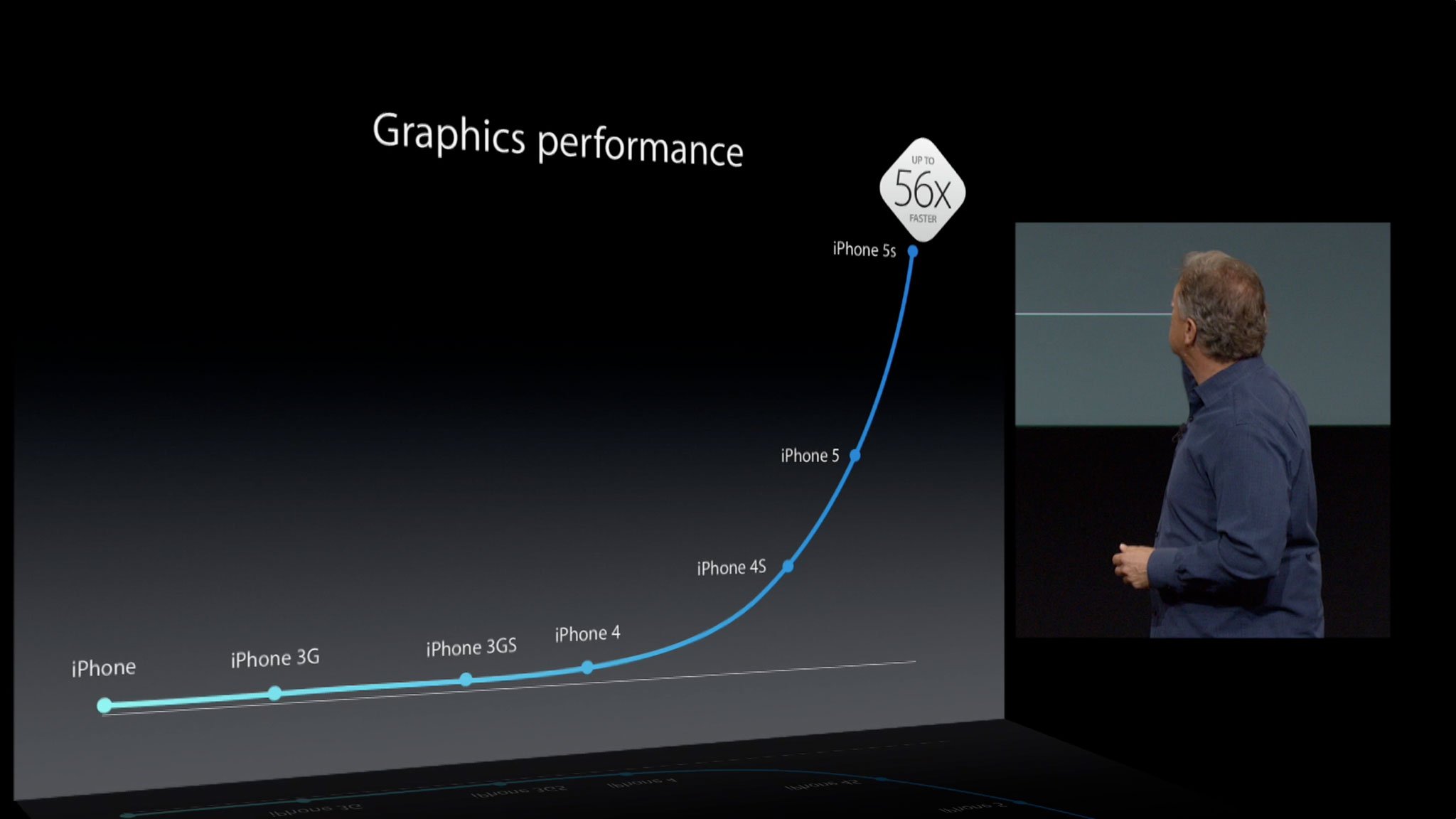
Likewise, the Apple A7 GPU is also claimed to be twice as fast. That works out to 56x faster than the original iPhone. Additionally, the Apple A7 runs OpenGL ES 3.0, which should let game developers flip their 64-bit switches and bring their desktop class games to the iPhone 5s more easily and quickly than ever before. (Insert Infinity Blade 3 here.)
Here's what the Apple Developer Center{.nofollow} says about OpenGL ES 3.0:
With iPhone 5s you can now create apps and games that look and perform better than ever with built in support for the latest version of OpenGL ES, version 3. The integrated graphics engine in A7 leverages the powerful 64-bit design to deliver beyond console-level graphics. Incorporate advances in the rendering pipeline, a new version of the GLSL ES shading language, and enhanced texturing capabilities in your apps today.
It's arguable whether or not Apple "gets games", and what they do with next-generation iPads, Apple TVs, and future devices remains to be seen. However, while "Console quality" is a term that gets thrown around a lot, 64-bit an OpenGL ES 3.0, shows Apple putting their tech where their mouth is.
Cameras, enclaves, and motion
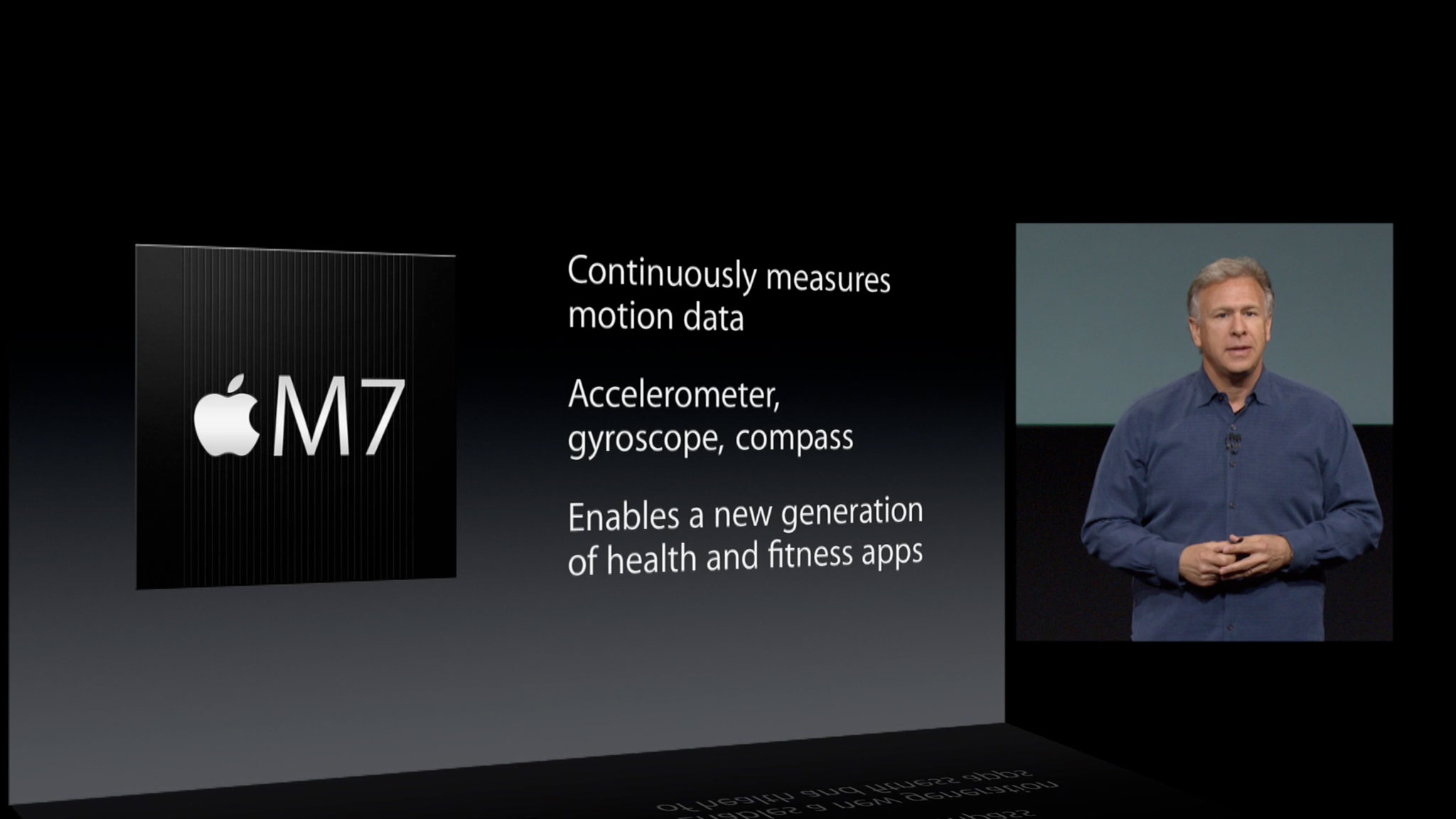
What's in the Apple A7 processor goes beyond 64-bit, and beyond even the CPU and GPU. There's a new coprocessor called the M7 that works alongside the Apple A7 to handle motion-related tasks. There's also a new ISP for even better mobile photography, and a dedicated enclave to securely store Touch ID fingerprint authentication data. We'll address each of those elements in their own, dedicated articles.
- iPhone 5s preview: Apple M7 motion coprocessor enables fitness, travel and more!
More to come
The Apple A7 processor is shipping alongside the iPhone 5s on September 20, and we may just see it in more products come October. Until then, keep up with all the latest news, and get involved in all the best conversations:
- Apple A7 chipset brings 64-bit, twice the speed, OpenGL ES 3.0 gaming
- Apple M7 coprocessor does all the fitness, health, and motion heavy-lifting
- iSight camera combines an improved sensor with a smarter image processor to make everyone a better photographer
- Touch ID makes fingerprint authentication mainstream

Rene Ritchie is one of the most respected Apple analysts in the business, reaching a combined audience of over 40 million readers a month. His YouTube channel, Vector, has over 90 thousand subscribers and 14 million views and his podcasts, including Debug, have been downloaded over 20 million times. He also regularly co-hosts MacBreak Weekly for the TWiT network and co-hosted CES Live! and Talk Mobile. Based in Montreal, Rene is a former director of product marketing, web developer, and graphic designer. He's authored several books and appeared on numerous television and radio segments to discuss Apple and the technology industry. When not working, he likes to cook, grapple, and spend time with his friends and family.
